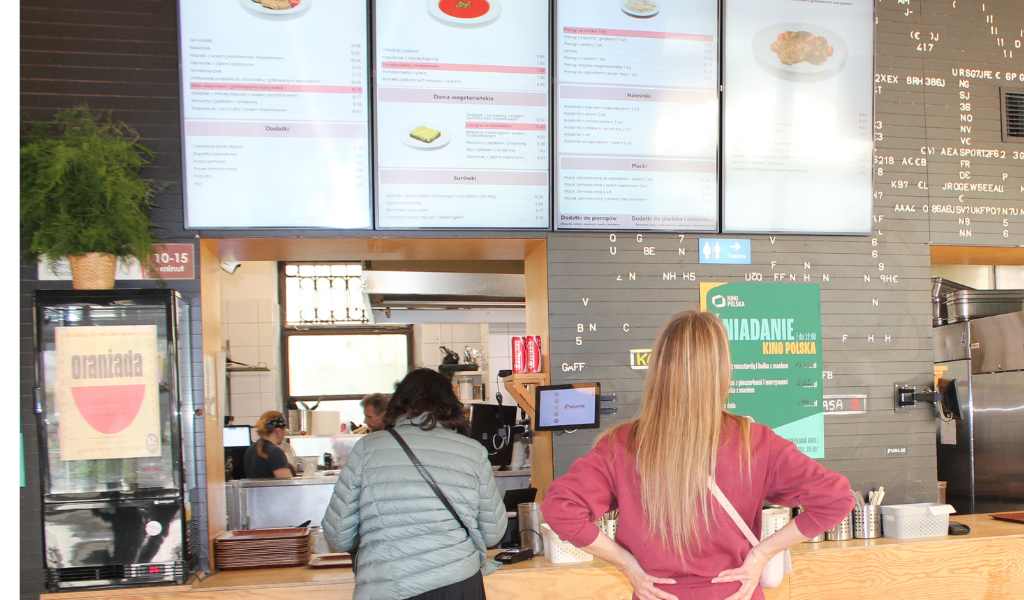It isn’t charity, it isn’t a treat, it’s universal. A public infrastructure, much like public libraries and public transport, ‘public restaurants’ are state-subsidised eateries which offer universal access to nutritious, appetising and sustainably produced foods. They have enormous potential to tackle myriad problems with our food systems, yet have been grossly under-researched.

DISHED – co-designing innovative infrastructure for sustainable, healthy, and equitable diets – seeks to address this through interdisciplinary research, an innovative pilot, and a new international mutual learning network.
Rising consumption of unhealthy foods
The consumption of fast food, ready meals and other unhealthy convenience options has skyrocketed in the UK in recent decades. These foods are high in salt, sugar, saturated and trans fats, and Ultra-Processed Foods (UPFs), which contain non-food additives. UPFs are linked with significant health problems, from cardiovascular and immunological disorders to obesity and Type 2 diabetes. The UK is on par with the US for the highest rate of UPF consumption in the world.
While many people struggle to feed themselves and their families a healthy diet, families facing financial hardship are particularly driven to consume more unhealthy convenience foods than households without children, and this has been exacerbated by the cost-of-living crisis. Parents and carers of children in these families are also more likely to experience poor mental health as a result of the enormous challenges of feeding their children healthy diets. These health impacts are often gendered, racialised and classed.
Public restaurants could address the barriers to healthy and sustainable eating experienced by most people, but which are particularly acute for families navigating poverty, such as lack of time, funds and cooking facilities. They can be co-designed to fulfil the social functions of food, including dignity, cultural meaning and enjoyment. And they can reduce the burden of domestic food work (planning, shopping, cooking, washing up) which remains strongly gendered. Evidence also indicates that public restaurants could improve diets both through foods consumed on-location (i.e. eating healthier food in the restaurants) and through influencing diets elsewhere (at home, at other eateries).
Shifting the burden
The public restaurant model is neither new nor foreign. Public Restaurants were essential for improving diets and reducing gendered foodwork burdens in wartime Britain and are today a cornerstone public health intervention in many countries where they have also supported more ecological farming systems through public procurement.
Crucially, public procurement shifts the responsibility for sustainable and ethical food work from the consumer to the public. In other words, it provides an alternative to the model of individual consumer behaviour driving food systems change, a deeply flawed model given that most people cannot actually ‘vote with their wallet.’
Buying healthy, ecologically produced, locally sourced and/or ethically produced foods is a privilege of a tiny minority, while simultaneously causing stress, stigmatisation and additional burdens on parents and on consumers who are marginalised along lines of race, ethnicity, religion, gender, class, ability, and/or location.
By contrast, by providing universal access, public restaurants can reduce dietary inequalities (and their associated mental health burdens) while also supporting a transition towards more ecologically produced food adhering to high ethical standards (e.g. living wage employment, ethical animal treatment).
Public Restaurants represent a fundamental shift towards rights-based framing. The UK is a signatory to the International Covenant on Economic, Social and Cultural Rights, which includes the right to food. But so far the state has done little to fulfil its responsibilities as a duty bearer. Public restaurants, alongside cash-first approaches, could progress the right to food while offering other public benefits by supporting fairer and more sustainable farming systems.
A place for everyone to eat well
When talking about public restaurants, inevitably our project team receives comments about how there is a soup kitchen near them or they know of a great community kitchen. In a UK context, while ‘community kitchens’ are similar to public restaurants in their provision of cooked food in social settings, they are distinct in several ways. Most significantly, rather than being designed as or perceived to be a universal service, ‘community kitchens’ tend to target low-income households and/or religious groups, resulting in stigma and/or exclusions.
Stigma may be particularly significant among households that are not destitute but are experiencing low-quality diets, including those newly deprived due to the cost-of-living crisis. Associations with poverty are also likely to deter adolescents, as they are strongly motivated by social signalling and the desire to socialise with dignity in eateries.
What we still need to know
Despite the enormous potentials of public restaurants, there are many questions about how this model actually works in various contexts and how it might work in the UK today. While Nourish Scotland have been hosting an informal international network of people involved or interested in public restaurants, there has been no systematic international comparison or synthesis of public restaurants internationally. There’s also a need for a sustained pilot to test out the concept and provide both data on the impacts and insights about how they could work in practice in the UK today.
To address this, DISHED will generate the first international comparison of public restaurant models, support an international mutual learning network, generate nuanced interdisciplinary knowledge about the needs, experiences and dietary health outcomes of deprived households with children, and will co-design, pilot and rigorously evaluate public restaurants in Dundee and Nottingham.
